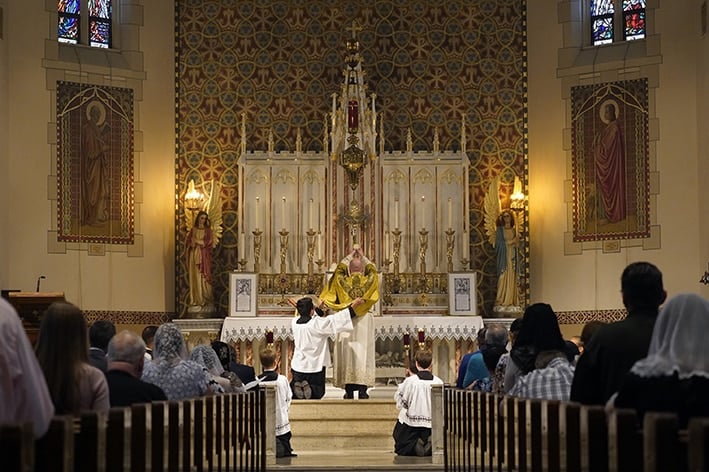
The description “young, traditional, Catholic” is one that typically sends shivers down the spines of many. “Why do you attend the old Mass? Haven’t we moved on from Latin? Didn’t you grow up with the new Mass? Where did you fall off?”
These are the typical questions I’ve been asked by other Catholics who haven’t experienced the old rite.
It is through the new Mass that they express their Catholic identity, can comfortably connect to Our Lord, and find a supportive community that shares their charism.
While I share their sentiments, I find my catholicity expressed best through the Traditional Latin Mass (TLM).
Because the liturgical reforms took place well before I was born, my decision to embrace the TLM came not from a reactionary response to the new Mass but from a love of the church.
I don’t needlessly hold on to the things of the past for the sake of it. I find in the TLM a space away from the world where I can pray contemplatively in silence and song and find a supportive community after Mass. I found the TLM and I chose it; it wasn’t a tradition that chose me.
The late Benedict XVI wrote in Summorum Pontificum that “what earlier generations held as sacred, remains sacred and great for us too, and it cannot be all of a sudden entirely forbidden or even considered harmful.”
For a young Catholic like me, the experience of attending my first few TLMs, even though I didn’t really know what was happening, felt like walking into St Peter’s Basilica in Rome. When I first walked into St Peter’s, even though I’d never seen it in the flesh before, it felt like I was coming home. That’s what the TLM is for me and many young Catholics.
This sets me, and other younger traditional Catholics, apart from harmful stereotypes of the oh-so-grumpy trads, who apparently want nothing more than to lecture you about how wrong your Mass is.
Many trads feel like they’ve been left behind by the church and only offered an exasperated “get with the times.”
This is their expression of their Catholic identity, they feel a charism to keep the history of the church aflame, and it’s spiritually frustrating to be told to leave it alone.
Early in his pontificate, Pope Francis described the church as a field hospital after battle: “The thing the church needs most today is the ability to heal wounds and to warm the hearts of the faithful.”
I know people who feel the post-conciliar woundedness but see themselves as left on DNR by the contemporary church.
As the Holy Father is inviting the Church into synodal dialogue, the apparent “rigidity” of trads can be a real opportunity for that dialogue, listening, and encounter that Pope Francis so often calls us to. It could also be a chance to hear what Catholic traditionalism means for a growing number of people my age.
I attend the TLM, happily follow the guidelines of Vatican II and work for the church, and I’m by no means an outlier in the traditional community in terms of fidelity to the Mystical Body of Christ.
We come to the church hoping for unity and to contribute our fair share yet are often not given a fair go.
In the spirit of synodality, the listening phase always precedes the dialogue and discernment. Is the church missing out on holistic dialogue and discernment by skipping over the young trads?
We have much to offer the church and, more than that, we want to give it – but will we be given the chance to be listened to? It takes courage but the church might be surprised by what it finds among the young traditionalists.
